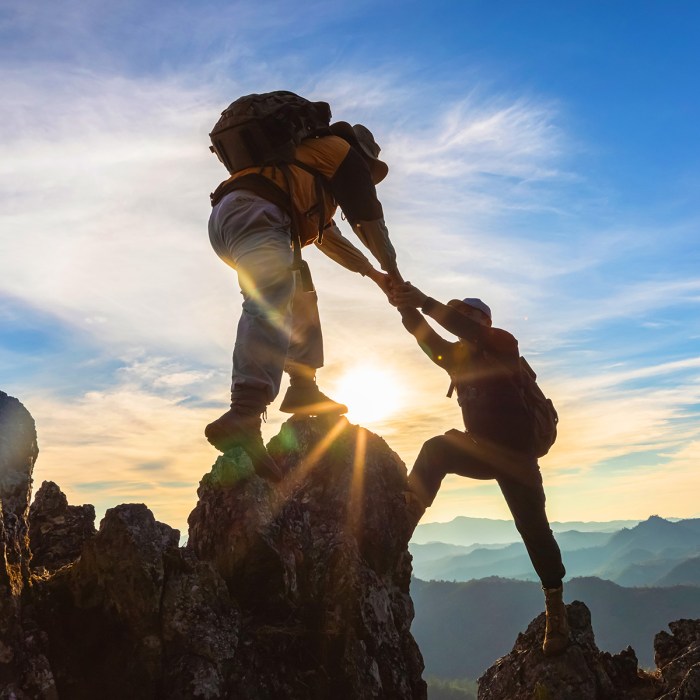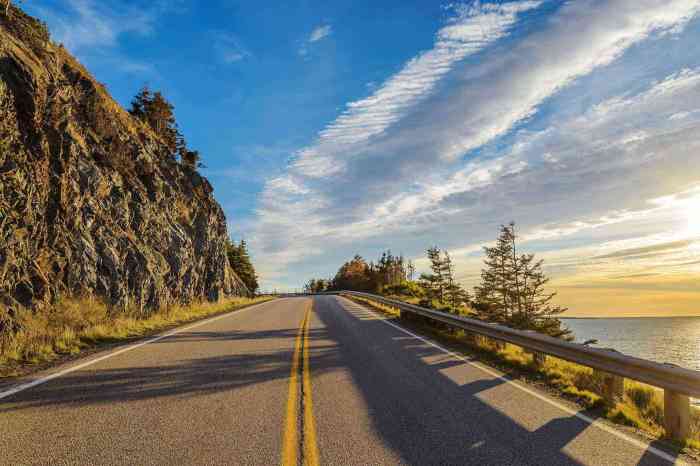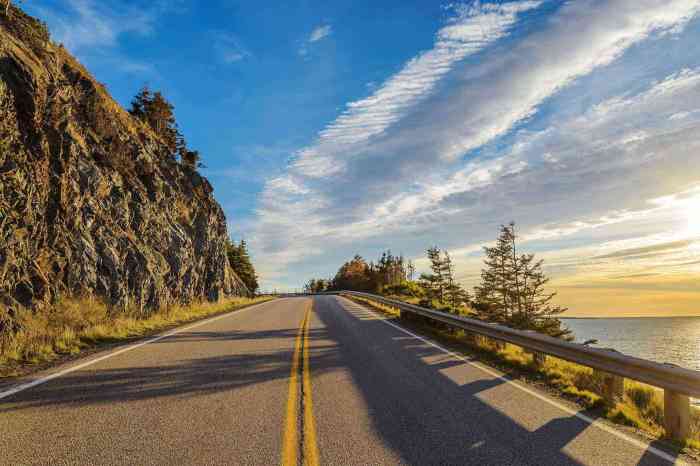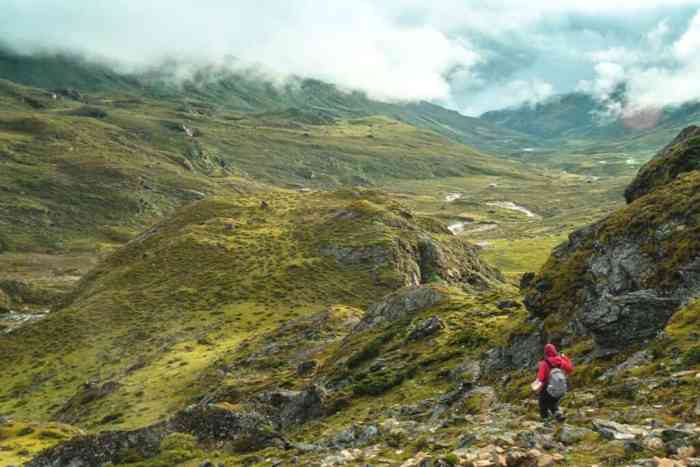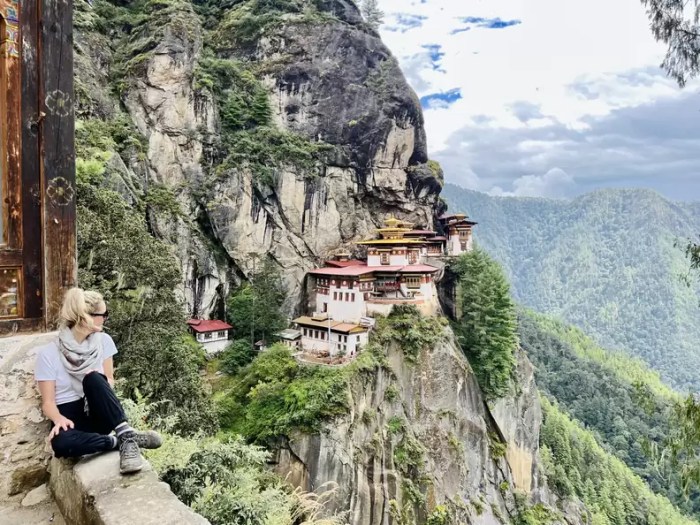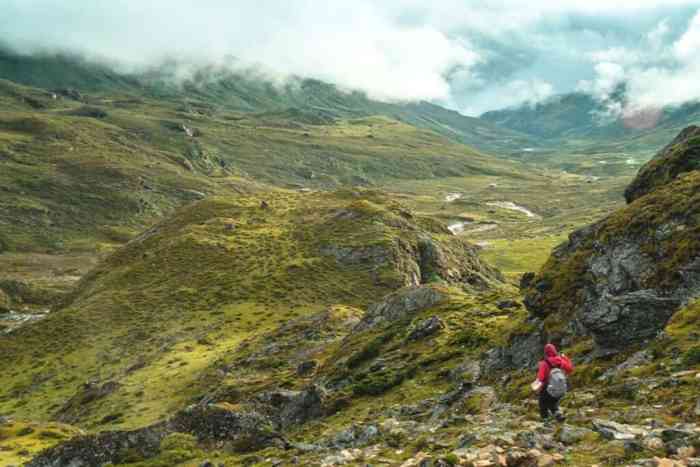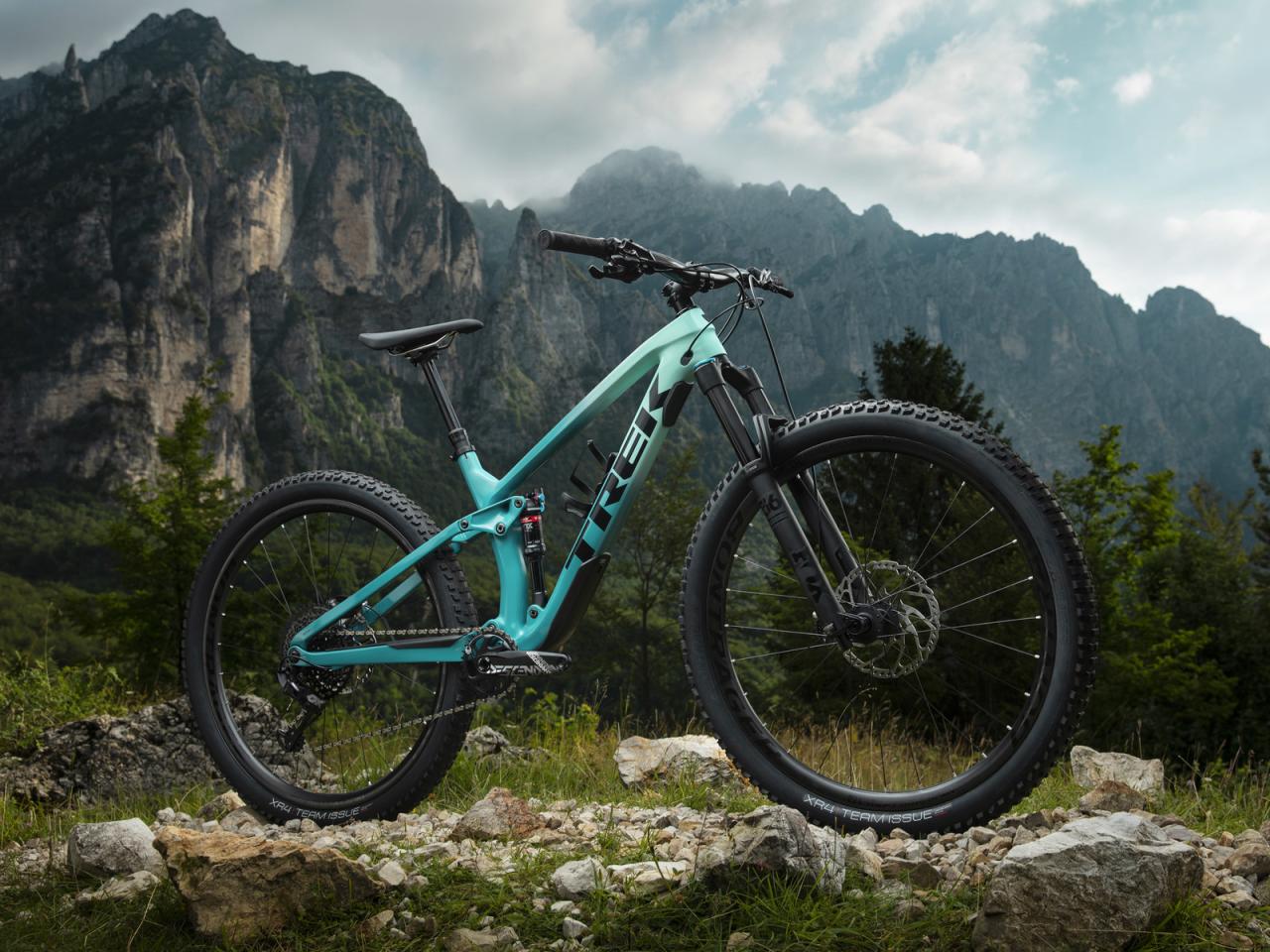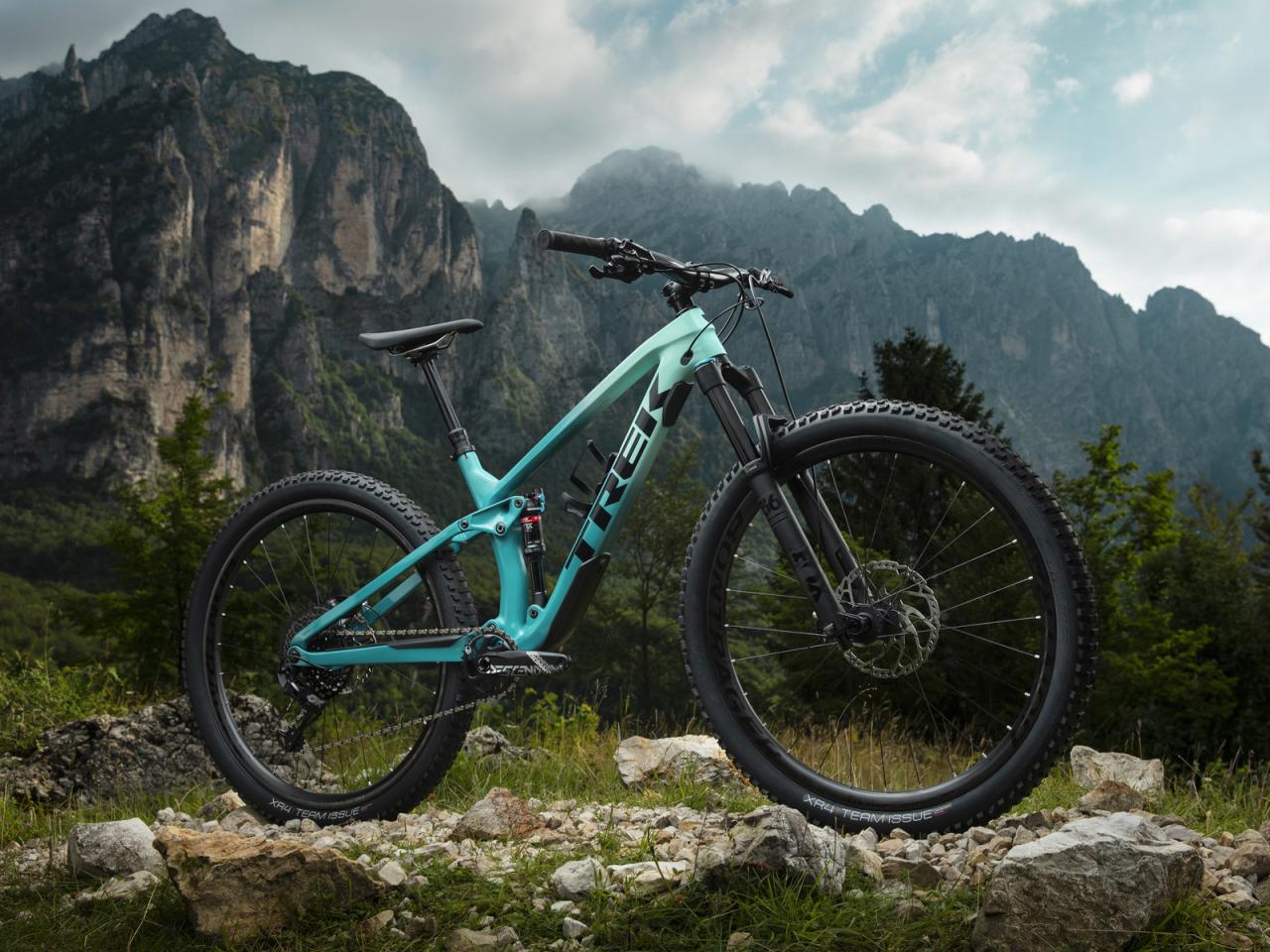Adventure travel trip ideas are exploding in popularity! From thrilling hikes to remote islands, this guide dives deep into planning unforgettable expeditions. We’ll explore everything from choosing the perfect destination to packing light and sustainably enjoying your adventure.
This comprehensive resource covers planning, destinations, activities, and gear, helping you craft the perfect adventure trip, tailored to your interests and budget. Whether you’re a seasoned explorer or a first-time adventurer, you’ll find valuable insights to make your trip a reality.
Introduction to Adventure Travel Trips
Adventure travel trips are journeys designed to immerse travelers in unique and challenging experiences beyond the typical tourist itinerary. These experiences often involve physical activity, cultural immersion, and exploration of natural environments. They go beyond the familiar comfort zones, pushing participants to confront new challenges and expand their horizons.Adventure travel distinguishes itself from other types of travel through its focus on active participation and engagement with the destination.
It prioritizes authentic cultural encounters, often involving interaction with local communities, and promotes a deeper understanding of the environment and its preservation. Unlike typical vacations that center around relaxation and sightseeing, adventure travel actively involves the traveler in the destination’s activities, fostering personal growth and a stronger connection with the world around them.
Motivations Behind Choosing Adventure Travel
People choose adventure travel for a variety of reasons, including a desire for personal growth, a thirst for new experiences, and a longing to connect with nature. Adventure travel often provides opportunities to test personal limits, build resilience, and discover hidden talents. The thrill of overcoming challenges, whether physical or mental, can be a powerful motivator, leading to a sense of accomplishment and self-discovery.
Furthermore, the opportunity to immerse oneself in a different culture and interact with local communities fosters empathy and understanding, enriching the travel experience on a deeper level.
Common Types of Adventure Travel Activities
Adventure travel encompasses a wide range of activities, catering to diverse interests and physical abilities. These activities provide unique opportunities to connect with nature and experience the destination in a more profound way.
- Hiking and Trekking:
- Rock Climbing and Mountaineering:
- Whitewater Rafting and Kayaking:
- Wildlife Safaris and Birdwatching:
- Caving and Spelunking:
- Scuba Diving and Snorkeling:
Hiking and trekking involve exploring trails and mountains, often requiring physical exertion and adaptability to varied terrains. These activities are suitable for those seeking a connection with nature and a sense of accomplishment.
These activities demand a high level of physical skill and mental fortitude. They offer an opportunity to challenge oneself physically and mentally while experiencing stunning landscapes.
These activities are ideal for those who enjoy water-based adventures. They offer a chance to navigate challenging river rapids and explore scenic waterways.
These activities provide opportunities to observe diverse wildlife and birds in their natural habitats. They foster a sense of appreciation for biodiversity and the intricate balance of ecosystems.
These activities offer a unique experience of exploring subterranean environments. They provide a fascinating glimpse into the earth’s hidden wonders.
These activities provide the chance to explore underwater worlds, encounter marine life, and experience the beauty of coral reefs.
Comparing Adventure Travel Destinations
The allure of adventure travel lies in its diversity. Different destinations offer unique experiences and challenges. This table compares key aspects of adventure travel in several regions, highlighting the diverse opportunities available.
| Destination | Key Activities | Cultural Immersion | Environmental Impact |
|---|---|---|---|
| Himalayan Mountains (Nepal, Bhutan) | Trekking, mountaineering, cultural tours | Exposure to unique Buddhist traditions and local communities | High altitude trekking requires careful planning to minimize environmental impact |
| Costa Rica | Whitewater rafting, ziplining, wildlife viewing | Interaction with indigenous communities and learning about biodiversity | Focus on ecotourism and conservation efforts |
| Amazon Rainforest (Peru, Brazil) | Jungle trekking, wildlife spotting, cultural immersion | Encounter with indigenous tribes and their rich traditions | Sustainable tourism practices are crucial to protect the delicate rainforest ecosystem |
| South Africa | Game drives, hiking, cultural tours | Experience diverse cultures and historical sites | Conservation efforts are essential to protect wildlife and biodiversity |
Planning Your Adventure Trip
Embarking on an adventure trip requires meticulous planning. A well-structured approach ensures a smooth and enjoyable experience, maximizing your enjoyment and minimizing potential challenges. This detailed guide provides a step-by-step approach, essential considerations, and practical tips to help you plan your dream adventure.
Destination Selection
Choosing the right destination is paramount to a successful adventure trip. Consider factors like your interests, budget, and physical capabilities. Researching different regions and understanding their unique offerings is crucial. Local culture and customs should be respected. Factors such as climate, terrain, and safety considerations must be meticulously examined.
Adventure destinations should be chosen based on personal preferences, ensuring they align with your interests and skill level.
Looking for epic adventure travel trip ideas? The Dominican Republic is a fantastic option, bursting with incredible activities. From hiking through lush rainforests to exploring the stunning coastlines, there are tons of things to do. Check out some top-notch experiences like zip-lining through the jungle or discovering hidden caves. For a complete list of the top things to do in dominican republic, be sure to check out this helpful guide: top things to do in dominican republic.
It’s a great starting point for planning your own unforgettable adventure travel trip!
Adventure Activity Selection
Selecting the right adventure activities is vital for a fulfilling trip. Consider your physical abilities and experience level. Activities should be carefully chosen to match your preferences and physical limitations. Research the difficulty levels of activities to ensure they align with your abilities. Prioritize activities that provide unique experiences and cater to your interests.
Budgeting for Your Adventure
Creating a detailed budget is essential for managing expenses effectively. Account for transportation, accommodation, activities, food, and any unforeseen costs. Explore options for cost-effective transportation, such as budget airlines or public transport. Consider purchasing travel insurance to mitigate potential financial risks. Look for discounts and deals on activities and accommodations.
Sustainable Adventure Practices
Adopting sustainable practices is crucial for minimizing your environmental impact. Choose eco-friendly accommodations and transportation options. Support local businesses and communities. Minimize waste and conserve water and energy. Participate in responsible wildlife viewing and avoid disturbing local ecosystems.
Researching Reliable Operators
Selecting a reliable adventure travel operator is vital for a safe and enjoyable experience. Seek recommendations from trusted sources. Read online reviews and compare prices and services. Verify the operator’s experience and qualifications. Check their commitment to safety and sustainability.
Inquire about the operator’s emergency response plan.
Adventure Travel Accommodations
| Accommodation Type | Description | Suitability |
|---|---|---|
| Camping | Backpacking and sleeping under the stars. | Budget-friendly, connecting with nature, physically demanding. |
| Guesthouses | Locally owned, intimate, and often offer unique cultural experiences. | Affordable, cultural immersion, and authentic experience. |
| Boutique Hotels | Unique and charming hotels in remote locations. | Luxury experience, often located in scenic areas. |
| Eco-lodges | Sustainable accommodations in natural environments. | Eco-conscious travellers, promoting nature conservation. |
| Homestays | Staying with local families for an immersive cultural experience. | Cultural immersion, experiencing local life. |
Popular Adventure Travel Destinations: Adventure Travel Trip Ideas
Embarking on an adventure trip is about more than just ticking off a list of activities; it’s about immersing yourself in a new culture, pushing your boundaries, and creating memories that last a lifetime. Choosing the right destination is crucial to ensure the trip aligns with your personal interests and expectations. This exploration will delve into some of the most popular adventure travel destinations globally, highlighting their unique experiences, activities, cultural significance, and cost considerations.Understanding the diverse landscapes and cultural nuances of different regions allows you to tailor your adventure to your preferences.
Whether you crave thrilling hikes in the Himalayas or serene kayaking expeditions in the Galapagos, this guide provides insights into various destinations and the activities they offer.
Popular Adventure Destinations Worldwide
Numerous destinations offer unique adventure travel experiences, each catering to different interests and budgets. From the rugged peaks of the Himalayas to the vibrant coral reefs of Southeast Asia, the possibilities are vast. Understanding the specific experiences offered in each region will help you select a destination that aligns with your personal preferences.
Unique Experiences in Different Regions
The allure of adventure travel lies in the chance to encounter unique environments and cultures. The Himalayas, for instance, offer challenging treks through breathtaking landscapes, while the Amazon rainforest provides an immersive experience with its diverse wildlife and lush vegetation. The Galapagos Islands provide opportunities to witness unique marine life in their natural habitat. Each location possesses a distinctive charm and appeal, reflecting the natural wonders and cultural heritage of the region.
Adventure Activities by Destination
This section Artikels the diverse range of adventure activities available in popular destinations.
- Himalayan Region: Trekking, mountaineering, and wildlife safaris are prevalent. The Annapurna Circuit and Everest Base Camp are popular trekking routes. The region also boasts opportunities for wildlife viewing, including the chance to spot the endangered snow leopard.
- Southeast Asia: Kayaking, jungle trekking, and exploring ancient temples are popular choices. Thailand, Cambodia, and Laos offer diverse landscapes and opportunities for adventure. From the dense jungles to the stunning beaches, the region is perfect for a variety of activities.
- Galapagos Islands: Snorkeling, diving, and wildlife watching are prominent activities. Witnessing unique marine species like giant tortoises, blue-footed boobies, and marine iguanas is a highlight. The islands are a haven for nature lovers.
Cultural Aspects of the Destinations
Understanding the local culture is an integral part of any adventure trip. The cultural experiences often add depth and meaning to your travels. Learning about the local customs, traditions, and beliefs enriches your understanding of the region and allows for a more respectful and meaningful interaction with the local community.
Cost Comparison of Adventure Travel
The cost of adventure travel varies significantly depending on the region and the type of activities you choose. The Himalayas, with its remote locations and challenging terrain, typically have higher costs compared to destinations in Southeast Asia. Consider factors like accommodation, transportation, permits, and gear when budgeting for your adventure trip. Careful planning and research can help you find activities and accommodations that fit your budget.
Selecting a Destination Based on Interests
Consider your interests when choosing an adventure destination. Are you interested in challenging treks, serene kayaking expeditions, or exploring ancient ruins? A destination that aligns with your interests will make the trip more fulfilling and enjoyable. Consider your physical capabilities and interests when selecting your destination.
Best Time to Visit Different Adventure Destinations
| Destination | Best Time to Visit | Reasons |
|---|---|---|
| Himalayan Region | Spring (March-May) and Autumn (September-November) | Pleasant weather, fewer crowds, ideal for trekking. |
| Southeast Asia | November to April (Dry Season) | Pleasant weather, less rainfall, ideal for outdoor activities. |
| Galapagos Islands | Dry season (June to November) | Optimal weather conditions for wildlife viewing and outdoor activities. |
Choosing the right destination requires careful consideration of your interests and budget. Researching and comparing options is essential to making an informed decision.
Adventure Travel Activities
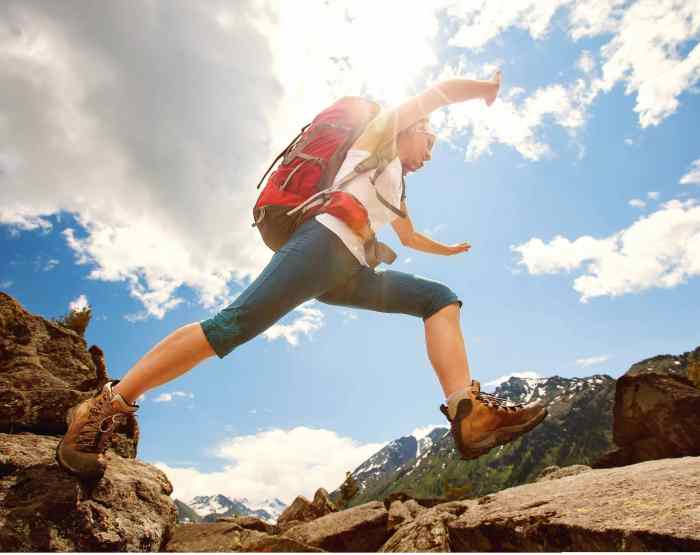
Embarking on an adventure trip often involves choosing activities that cater to your interests and physical capabilities. From thrilling climbs to serene hikes, the options are vast. Understanding the necessary skills, preparation, and safety precautions is crucial for a safe and memorable experience. This section explores various adventure activities, highlighting the required skills, preparation, safety measures, and equipment, and providing insights into choosing reputable tour operators.
Diverse Adventure Activities
Adventure travel offers a wide array of activities for diverse interests. This includes everything from exhilarating outdoor pursuits to culturally immersive experiences. Consider your interests and physical abilities when selecting activities. Choosing activities that align with your preferences will ensure a more enjoyable and fulfilling trip.
- Hiking and Trekking: These activities involve exploring natural landscapes on foot, offering opportunities for stunning scenery and physical exertion. Hiking often involves well-maintained trails, while trekking may involve more challenging terrain and longer durations. Essential skills include navigation, route planning, and physical fitness. Proper preparation includes adequate hydration, appropriate footwear, and layered clothing. Safety precautions include carrying first-aid supplies, informing someone of your itinerary, and being aware of weather conditions.
Equipment needed includes sturdy hiking boots, a backpack, water bottles, and a map/compass or GPS device.
- Rock Climbing and Mountaineering: These activities involve ascending steep rock faces or mountains. Climbing requires strength, agility, and precise technique. Mountaineering, a more demanding form, necessitates advanced skills in navigation, weather awareness, and high-altitude acclimatization. Essential skills include belaying techniques (in climbing), rope work, and route finding. Safety precautions include using proper climbing gear, checking weather conditions, and being aware of potential hazards like rockfalls.
Equipment needs include climbing ropes, harnesses, carabiners, and helmets, and appropriate mountaineering gear.
- White Water Rafting and Kayaking: These activities involve navigating rivers with strong currents. Rafting often involves a larger group with a guide, while kayaking offers more individual control. Essential skills for both include water safety, paddling techniques, and communication in a group. Preparation includes appropriate clothing, appropriate safety gear, and familiarity with river conditions. Safety precautions include following the guide’s instructions, wearing life jackets, and understanding the river’s current.
Equipment includes kayaks, life vests, helmets, and potentially dry bags.
- Wildlife Viewing and Safari Adventures: These activities involve observing and interacting with wildlife in their natural habitats. Essential skills include patience, observation, and respect for wildlife. Preparation includes appropriate clothing for the environment, and understanding local wildlife behavior and regulations. Safety precautions include staying with a guide, maintaining a safe distance from animals, and following park regulations. Equipment may include binoculars, spotting scopes, and cameras.
Difficulty Levels and Safety Precautions
Understanding the difficulty level of an activity is vital to ensure a safe and enjoyable experience. Activities vary greatly in terms of physical demands and skill requirements. Accurately assessing the difficulty level helps you choose activities appropriate to your abilities. Safety precautions should always be prioritized.
- Easy Activities: Hiking on well-maintained trails, leisurely kayaking on calm waters, and some wildlife viewing activities generally fall under easy activities. Preparation primarily involves appropriate gear and a good understanding of the environment.
- Moderate Activities: Rock climbing on easier routes, trekking on moderate trails, and white water rafting on calmer rivers are considered moderate activities. These require more physical exertion and specific skills. Appropriate safety measures and detailed planning are crucial.
- Difficult Activities: Mountaineering, advanced rock climbing, and white water rafting on challenging rivers are considered difficult. These activities require extensive experience, specific skills, and specialized equipment. Thorough planning, meticulous preparation, and a strong understanding of safety protocols are absolutely essential.
Equipment Needs
Appropriate equipment is crucial for a safe and enjoyable adventure experience. Choosing the right equipment depends heavily on the activity and its specific demands.
- Hiking/Trekking: Hiking boots, backpack, water bottles, first-aid kit, map/compass or GPS, and appropriate clothing are essential.
- Rock Climbing/Mountaineering: Climbing ropes, harnesses, carabiners, helmets, and appropriate mountaineering gear are necessary.
- White Water Rafting/Kayaking: Life vests, helmets, dry bags, and appropriate clothing are critical.
- Wildlife Viewing: Binoculars, spotting scopes, cameras, and appropriate clothing are essential for a comfortable and effective experience.
Reputable Tour Operators
Researching and selecting reputable adventure tour operators is critical to ensure a safe and well-organized trip. Look for operators with a proven track record, positive reviews, and qualified guides.
Planning an adventure travel trip? Beyond the breathtaking hikes and thrilling climbs, consider the culinary experiences. Sometimes the best part of an adventure is savoring a meal with a panoramic vista. Think about those amazing restaurants with a view, like the ones featured on restaurants with a view , perfect for a relaxing break after a day of exploring.
Ultimately, these unforgettable meals enhance the entire adventure travel experience!
- Background Check: Verify the operator’s experience and safety certifications.
- Reviews and Testimonials: Read reviews from previous customers to understand their experiences.
- Insurance and Licenses: Ensure the operator is properly insured and licensed to operate the chosen activity.
- Guide Qualifications: Check the qualifications and experience of the guides who will lead the activity.
Estimated Costs for Adventure Activities
The cost of adventure activities varies depending on factors such as location, duration, difficulty, and the chosen operator. This table provides a general estimation of costs.
| Activity | Estimated Cost (USD) |
|---|---|
| Basic Hiking Day Trip | $50 – $150 |
| Multi-Day Trekking Tour | $300 – $1500 |
| Rock Climbing Trip (Beginner) | $100 – $300 |
| White Water Rafting Trip (Moderate) | $200 – $500 |
| Wildlife Safari (Basic) | $250 – $1000 |
Adventure Travel for Different Groups
Adventure travel caters to a wide range of interests and needs, from families seeking fun-filled experiences to solo explorers craving independence. Understanding the specific desires of different groups allows for the creation of tailored itineraries and activities that maximize enjoyment and safety. This exploration delves into adventure travel options for various groups, highlighting unique considerations for each.Adventure travel is no longer confined to a single demographic.
It has evolved into a diverse and inclusive experience, accommodating a broad range of preferences and abilities. Careful planning and consideration of individual needs are crucial for crafting unforgettable journeys for everyone.
Planning an adventure travel trip? Thinking about exploring the world’s incredible destinations? Japan, recently named the best wellness destination in Asia, offers a unique blend of ancient traditions and cutting-edge spas. From hiking through lush forests to exploring ancient temples, Japan provides a perfect balance of adventure and relaxation. This makes it a truly special place to consider for your next trip.
Adventure Travel for Families
Families often seek adventure trips that balance excitement with safety and shared experiences. Consider activities like guided hikes with stunning views, wildlife safaris, or kayaking tours in calm waters. Family-friendly campsites with amenities like play areas and communal kitchens can enhance the experience. Prioritizing kid-friendly activities and accommodations is key for a successful family adventure.
Adventure Travel for Solo Travelers
Solo travelers often value independence and self-discovery. Solo backpacking tours, kayaking trips, or independent hiking excursions allow for exploration at one’s own pace. Safety is paramount, and these trips should include reliable communication methods, pre-arranged meetups, and potentially, joining a small group tour for shared experiences. Solo travel can be a great opportunity for personal growth.
Adventure Travel for Couples
Couples often seek adventure trips that foster intimacy and shared experiences. Activities like hot air balloon rides, tandem skydiving, or romantic hiking trails in scenic locations are popular choices. Consider trips focused on relaxation, such as a guided meditation retreat combined with adventure activities.
Adventure Travel for Groups of Friends
Friends often seek adventure trips that involve camaraderie and shared challenges. Group activities like whitewater rafting, rock climbing, or multi-day backpacking trips encourage teamwork and lasting memories. These trips should have a balance of shared activities and individual exploration, enabling friendships to flourish.
Adventure Travel for Seniors
Senior adventure travelers may seek trips with a slower pace, lower physical demands, and focus on cultural experiences. Scenic drives with stops at historical sites, guided nature walks, or visits to local villages can be excellent options. Accessible accommodations and activities that minimize strenuous exertion are essential considerations. Focus on the mental and emotional benefits of travel, such as cognitive stimulation and social interaction.
Unique Considerations for Each Group Type
Tailoring adventure trips to specific groups requires careful attention to their unique needs and preferences. Families may require activities that cater to all ages, while solo travelers may value flexibility and independence. Couples may benefit from activities that foster intimacy, and groups of friends might benefit from collaborative experiences. Seniors may require activities with a lower physical demand, emphasizing comfort and safety.
Table of Adventure Travel Tours for Various Groups
| Group Type | Example Activities | Unique Considerations |
|---|---|---|
| Families | Guided nature walks, wildlife safaris, family-friendly campsites | Kid-friendly activities, age-appropriate challenges, accommodations |
| Solo Travelers | Backpacking tours, kayaking, independent hiking | Safety measures, communication, potentially joining a small group tour |
| Couples | Hot air balloon rides, tandem skydiving, romantic hiking | Activities that foster intimacy, shared experiences |
| Groups of Friends | Whitewater rafting, rock climbing, multi-day backpacking | Teamwork, balance of shared and individual activities |
| Seniors | Scenic drives, guided nature walks, cultural visits | Accessible accommodations, activities with low physical demand, focus on comfort and safety |
Essential Gear and Preparation
Adventure travel is exciting, but meticulous preparation is key to a safe and enjoyable experience. Proper gear, physical conditioning, and a well-thought-out plan are crucial for overcoming the challenges and maximizing the rewards of your journey. This section details the essential elements for packing and preparing for various adventure trip types.Effective preparation ensures you’re not only equipped for the adventure but also ready to handle unexpected situations.
Packing light, choosing appropriate gear, and understanding safety procedures are paramount. Physical conditioning and the right clothing and footwear can significantly impact your comfort and success. Finally, knowing how to react in emergency situations is critical.
Essential Gear for Adventure Trips
Thorough preparation involves assembling the right gear. This goes beyond basic items and considers the specific activities and environments you’ll encounter. The specific items will vary depending on the type of adventure.
- Clothing: Layers are essential for fluctuating weather conditions. Moisture-wicking fabrics are highly recommended for comfort and preventing overheating or chilling. Include appropriate hiking attire, rain gear, and warm layers for potentially cold nights. A hat and gloves are also crucial, especially in mountain or cold-weather activities.
- Footwear: Proper hiking boots or trail shoes are vital. Consider the terrain and duration of the trip when selecting footwear. Durable, supportive footwear can significantly impact comfort and safety.
- Navigation Tools: A map, compass, and GPS device are crucial for navigating unfamiliar terrain. Familiarize yourself with their use before the trip. Knowing how to use them can be the difference between getting lost and finding your way.
- First Aid Kit: A comprehensive first-aid kit is essential for minor injuries and illnesses. Include bandages, antiseptic wipes, pain relievers, and any personal medications. Be sure to include supplies for blisters, sunburns, and insect bites. Having a well-stocked kit can prevent a small issue from becoming a major problem.
- Emergency Supplies: Include a whistle, a flashlight, extra batteries, and a waterproof bag for storing important documents and valuables.
- Cooking and Eating Supplies: If camping, bring cookware, utensils, and sufficient food and water for the duration of your trip. Plan your meals carefully, considering the amount of food you need and how to store it appropriately.
Packing Light and Efficiently
Packing light is crucial for comfort and safety during an adventure trip. Minimizing weight reduces strain on your body and simplifies travel.
- Prioritize: Choose only essential items. Consider the specific activities you’ll be engaging in and pack accordingly. Be sure to leave room for souvenirs and unexpected purchases. A good way to do this is by making a detailed packing list beforehand.
- Choose Multifunctional Items: Multifunctional items can save space and weight. Consider a backpack with multiple compartments or a jacket that can be used for warmth and protection from the rain.
- Pack Appropriately: Pack items in a way that they are easily accessible and won’t shift during the trip. Use compression bags for clothing to save space and use packing cubes to organize items and maximize space.
Essential Safety Equipment and Supplies, Adventure travel trip ideas
Safety is paramount during adventure trips. Adequate safety equipment and supplies are essential to prevent accidents and ensure a safe journey.
- Safety Gear: This can include helmets, harnesses, and other gear appropriate for the activities you plan to undertake. Always follow safety guidelines and instructions from guides or instructors.
- Communication Devices: A satellite phone or a personal locator beacon (PLB) can provide communication and emergency assistance in remote areas. Ensure these are fully charged and working properly.
- Navigation Tools: Maps, compasses, and GPS devices are important for navigation, especially in unfamiliar areas.
Physical Preparation for Different Activities
Physical preparation is vital for any adventure trip. The specific preparation depends on the activities you’ll be undertaking.
- Training: Training is necessary for activities like hiking, climbing, or backpacking. Build up your endurance and strength gradually to avoid injury. Start with shorter treks and gradually increase the duration and difficulty.
- Conditioning: Appropriate conditioning is essential for activities like cycling or kayaking. Increase your stamina and strength to complete the planned activities. Be sure to consider the terrain and duration of the activities.
Appropriate Clothing and Footwear
The right clothing and footwear are essential for comfort and safety during your trip. The choice depends on the climate and activities planned.
- Moisture-wicking: Moisture-wicking fabrics are highly recommended for outdoor activities. They help regulate body temperature and keep you dry. Look for moisture-wicking clothing and footwear for your trip.
- Weather Protection: Clothing and footwear should be suitable for the expected weather conditions. Pack layers of clothing to adjust to changes in temperature. Appropriate rain gear and warm clothing are crucial, especially for trips in mountain areas or during the cold season.
First Aid and Emergency Preparedness
Knowing what to do in case of an emergency can be the difference between life and death. Proper first aid and emergency preparedness are essential for any adventure trip.
- First Aid Training: Take a first-aid course to learn basic first aid and emergency procedures. Basic first-aid knowledge is crucial to manage minor injuries and illnesses.
- Emergency Procedures: Learn the emergency procedures for the specific activities you’ll be undertaking. Understand how to contact emergency services if needed.
- Emergency Contact List: Have a list of emergency contacts and share it with someone you trust. Include local emergency services and other important people in your contact list.
Packing Lists for Different Activities
| Activity | Essential Gear |
|---|---|
| Hiking | Hiking boots, layers of clothing, water bottles, map, compass, first-aid kit, sunscreen, hat, sunglasses, backpack, snacks, rain gear |
| Camping | Tent, sleeping bag, sleeping pad, cooking equipment, food, water, cooking supplies, utensils, first-aid kit, headlamps, lighter, sunscreen, insect repellent, rain gear, trash bags |
| Rock Climbing | Climbing harness, ropes, carabiners, helmet, climbing shoes, chalk bag, first-aid kit, water bottles, snacks, sunscreen, extra layers of clothing |
Responsible Adventure Travel
Adventure travel, while offering exhilarating experiences, comes with a responsibility to minimize our impact on the environment and local communities. Responsible travel is not just about “doing good”; it’s about ensuring that these incredible destinations and the people who live there can sustain themselves for future generations. It’s a way to connect with nature and cultures in a meaningful way, respecting the delicate balance of the places we visit.
Environmental Responsibility in Adventure Travel
Environmental stewardship is paramount in adventure travel. Our choices directly influence the ecosystems we explore. Impacts range from carbon emissions from transportation to the disturbance of fragile habitats. Minimizing our environmental footprint is crucial to preserving the beauty and biodiversity of these destinations. Sustainable practices are essential for long-term enjoyment and protection.
Supporting Local Communities
Adventure tourism can be a powerful engine for economic growth in local communities. By choosing accommodations and guides who support local businesses, we contribute to job creation and economic development. This, in turn, fosters a sense of ownership and pride within the community. Responsible travel choices empower local communities to preserve their traditions and livelihoods.
Impact of Responsible Travel Choices
Responsible travel choices have a ripple effect, extending beyond the immediate experience. By supporting eco-friendly businesses and respecting local customs, we contribute to the preservation of natural resources and cultural heritage. This commitment to responsible tourism ensures that future generations can experience the same wonder and excitement that we do. Positive impacts include reduced environmental damage and stronger, more resilient communities.
Eco-Friendly Adventure Travel Practices
Several practices can make adventure travel more environmentally conscious. Choosing eco-lodges and tour operators committed to sustainability is a fundamental step. Utilizing public transportation or cycling whenever possible, reduces carbon emissions. Packing reusable water bottles and minimizing waste is another way to lessen our impact. Respecting wildlife and their habitats is also vital.
Support for local conservation efforts can also amplify our impact.
Minimizing Your Environmental Footprint
Minimizing your environmental footprint involves conscious decisions throughout your trip. Reducing consumption of single-use plastics, and carrying reusable bags and water bottles are basic actions. Choosing energy-efficient transportation options, such as trains or buses, when possible reduces carbon emissions. Conserving water and energy during your stay at accommodations is also important. Support for local, sustainable food options minimizes the environmental impact of your meals.
Ethical Considerations in Adventure Travel
Respecting local customs and traditions is paramount in adventure travel. Learning basic phrases in the local language, dressing appropriately, and being mindful of cultural norms demonstrates respect. Avoid taking souvenirs that might be considered culturally significant. Prioritizing the well-being of the local community over your own comfort or convenience is essential. Transparency and ethical practices from tour operators are critical in maintaining trust and respect.
Supporting Local Communities: A Summary
| Method | Description |
|---|---|
| Accommodation Choices | Selecting eco-lodges, guesthouses, or homestays owned and operated by local communities. |
| Dining Options | Patronizing restaurants and food stalls that source ingredients locally and support local farmers. |
| Tour Operators | Choosing tour operators committed to responsible practices, such as employing local guides and using sustainable transportation. |
| Shopping | Purchasing souvenirs from local artisans and supporting their livelihoods. |
| Donations | Making donations to local conservation projects or community initiatives. |
Illustrative Examples of Adventure Trips
Embarking on an adventure trip is more than just ticking off a bucket list item; it’s about immersion, discovery, and personal growth. These detailed examples showcase diverse adventure experiences, highlighting the range of possibilities and the importance of careful planning for a truly unforgettable journey. From trekking through lush landscapes to exploring vibrant cultures, each trip is designed to cater to different interests and experience levels.These examples emphasize the importance of responsible travel, demonstrating how to minimize environmental impact and support local communities.
The estimated costs are approximate and can vary based on factors like accommodation choices and activity upgrades.
Example 1: The Himalayan Trek
This trek focuses on experiencing the stunning beauty of the Himalayas while contributing to local communities.The itinerary involves a 10-day trek through the Annapurna region of Nepal, starting with a scenic flight to Pokhara. The trek includes acclimatization hikes, breathtaking views of glaciers and mountain peaks, and interactions with local Sherpa communities. Activities include trekking, cultural immersion, and opportunities for wildlife spotting.Estimated cost: $2,500 – $4,000 per person (excluding international flights).
This includes guided trekking, accommodation in tea houses, meals, and some entrance fees. The price range reflects varying levels of luxury accommodation and the possibility of upgrading to a higher-end experience.Ideal traveler: Adventurous individuals who enjoy trekking in challenging terrain, appreciate cultural immersion, and are comfortable with varying altitudes.Sustainable practices: Supporting local guides and porters, staying in eco-friendly tea houses, using reusable water bottles, and minimizing waste.
Purchasing fair-trade goods from local markets also contributes to the community.
Example 2: The Costa Rican Rainforest Adventure
This trip highlights wildlife encounters and rainforest conservation efforts.The 7-day itinerary focuses on exploring the lush rainforests of Costa Rica. Activities include zip-lining through the canopy, guided jungle hikes, wildlife viewing (monkeys, sloths, birds), and visits to national parks. The trip includes accommodation in eco-lodges and a boat trip through a river.Estimated cost: $1,800 – $3,500 per person (excluding international flights).
This covers eco-lodge stays, guided tours, park entrance fees, and meals. The cost range reflects variations in accommodation and the option of including additional activities like white-water rafting.Ideal traveler: Nature lovers who enjoy wildlife spotting, physical activity, and exploring tropical environments. Individuals interested in conservation and sustainable practices will appreciate this trip.Sustainable practices: Staying in eco-lodges committed to environmental protection, supporting local guides and communities, using biodegradable toiletries, and participating in reforestation initiatives.
Example 3: The African Safari
This trip focuses on wildlife viewing and experiencing the African savanna.This 10-day safari experience takes place in Tanzania, focusing on the Serengeti and Ngorongoro Crater. Activities include game drives, hot air balloon safaris, cultural interactions with local Maasai communities, and optional bush walks. Accommodation is in luxurious safari camps or lodges.Estimated cost: $5,000 – $10,000 per person (excluding international flights).
The cost encompasses private guided tours, premium accommodations, meals, park entrance fees, and optional activities. The price range reflects the level of luxury accommodations and possible additions to the safari itinerary.Ideal traveler: Individuals who enjoy wildlife viewing, photography, and luxury accommodations. Those interested in learning about the African ecosystem and its inhabitants will find this trip enriching.Sustainable practices: Choosing safari operators committed to ethical practices, supporting local communities through fair trade, using eco-friendly transportation, and minimizing the environmental impact of the activities.
Example 4: The City Adventure: Exploring Lisbon
This trip combines cultural immersion with historical exploration.This 5-day itinerary focuses on exploring the historical city of Lisbon. Activities include walking tours of the historic districts, visiting museums and monuments, enjoying traditional Fado music, and indulging in local cuisine. Accommodation is in centrally located hotels.Estimated cost: $1,200 – $2,000 per person (excluding international flights). This covers accommodation, guided tours, meals, transportation, and entrance fees.
The cost range reflects the possibility of choosing more budget-friendly or upscale accommodations.Ideal traveler: Individuals interested in history, culture, and experiencing a vibrant European city. Those who appreciate good food and music will enjoy this trip.Sustainable practices: Using public transportation, supporting local restaurants and businesses, minimizing waste, and respecting the local culture.
Summary Table of Adventure Trips
| Trip Name | Duration | Key Activities | Estimated Cost | Ideal Traveler | Sustainable Practices |
|---|---|---|---|---|---|
| Himalayan Trek | 10 days | Trekking, cultural immersion, wildlife spotting | $2,500 – $4,000 | Adventurous trekkers | Supporting local communities, eco-friendly lodging |
| Costa Rican Rainforest | 7 days | Zip-lining, jungle hikes, wildlife viewing | $1,800 – $3,500 | Nature lovers | Eco-lodges, supporting local guides |
| African Safari | 10 days | Game drives, hot air balloon safaris, cultural interactions | $5,000 – $10,000 | Wildlife enthusiasts | Ethical safari operators, supporting local communities |
| Lisbon City Adventure | 5 days | Walking tours, museum visits, Fado music | $1,200 – $2,000 | Culture & history lovers | Public transportation, supporting local businesses |
Conclusion
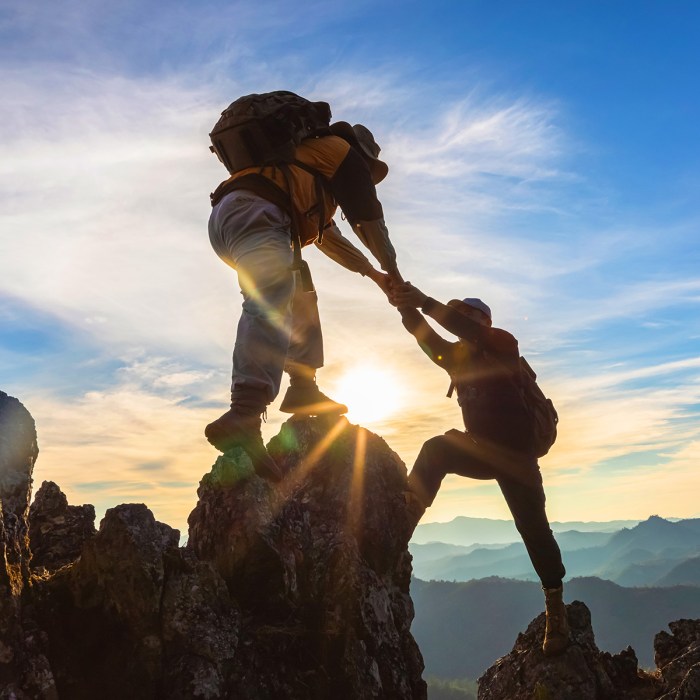
So, are you ready to embark on your next adventure? This guide has equipped you with the knowledge and inspiration to plan a truly unforgettable trip. Remember to prioritize safety, research thoroughly, and most importantly, have fun! Let the adventure begin!
